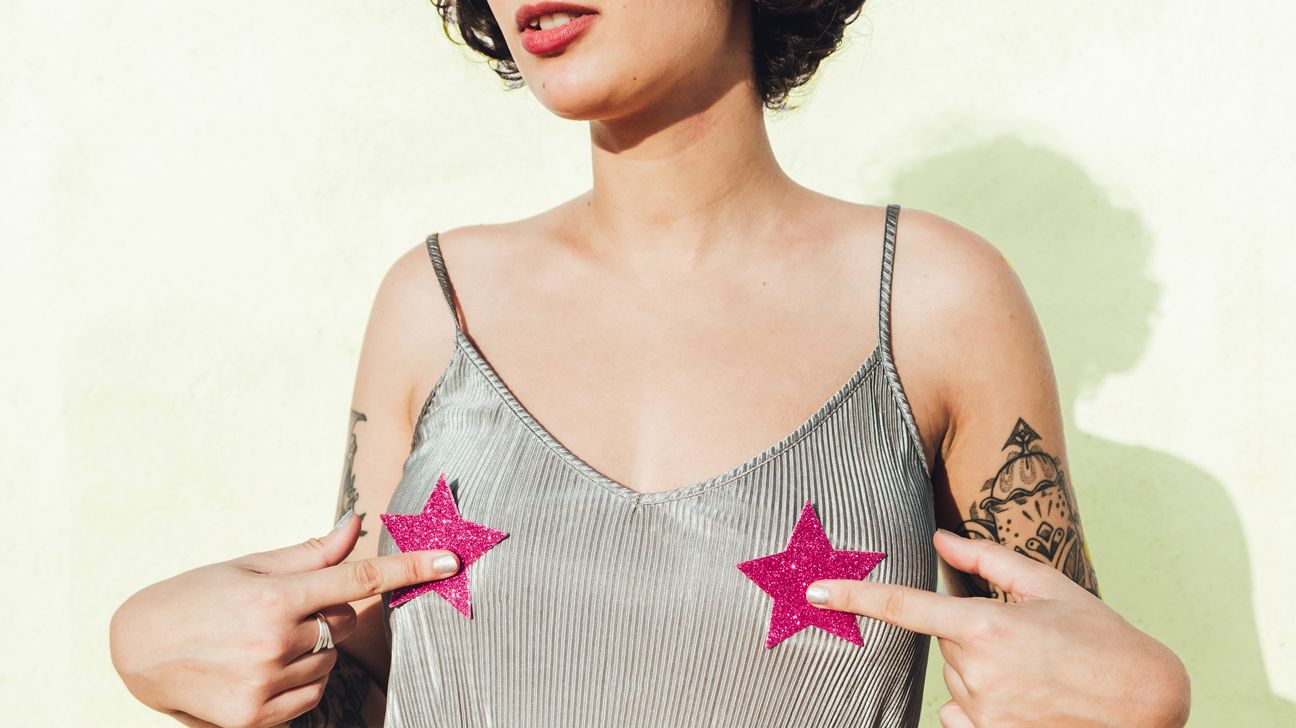Inverted nipples face inward rather than outward. Though usually harmless, it’s best to check with a healthcare professional to get shy nips the all-clear.
Nipples come in all shapes, including inverted ones. If yours are more like innies than outies, you’re not alone! Inverted nipples, also known as retracted or invaginated, are common and usually harmless.
Nipples can range from popping out when stimulated to constantly staying retracted. While usually harmless, knowing the causes and potential treatments is wise, especially if there’s discomfort. Keep reading to learn more!

Inverted nipples mean your chest cherries retract inward instead of protruding outward. They can be a genetic gift or something that happens over time.
Often, they’re just doing their own thing, but understanding the different grades can help you know if action is warranted.
Nipple inversion comes in three grades, according to the level of drama. Let’s break it down so you know what’s going on with those inward-facing nips.
Grade 1
Grade 1 inverted nipples are like the shy party guests who need a little encouragement to join the fun. They can pop out with stimulation, like a chilly breeze or a gentle touch.
These are the least inverted and usually don’t cause any trouble.
Grade 2
Grade 2 inverted nipples are a bit more stubborn. They can be coaxed out with some effort, but they’re quick to retreat. They might need a bit more attention, mainly if they cause discomfort or issues with breastfeeding.
Grade 3
Grade 3 inverted nipples are the ultimate homebodies. They’re fully retracted and rarely, if ever, make an appearance. These are the most inverted and might need surgical intervention if they’re causing any issues.
So, why do some nipples decide to turn inward instead of standing out proudly? There are a few reasons this might happen:
Genetics
Sometimes, you’re born with inverted nipples. Doctors call this congenital inversion.
If your parents or siblings have inverted nipples, there’s a higher chance you might too. It’s like inheriting your mom’s eye color or your dad’s knack for bad jokes — genetics is a big player.
Chestfeeding
For some new parents, the process of chestfeeding can lead to changes in breast tissue that cause nipple inversion. Your boobs are trying to adjust to their new role, and sometimes, things get a little flipped around!
While this can be temporary, it may also stick around long term.
Other issues
There are a few other culprits that can cause nipples to go inward. These include:
- Trauma: Any injury to the breast area can lead to changes in nipple position.
- Infections: Certain infections can affect breast tissue and cause inversion.
- Medical conditions: Some conditions, like breast cancer, can cause nipple inversion.
Remember, if your nipples decide to play hide-and-seek and it’s out of the blue, a quick chat with a healthcare professional is always wise to make sure everything’s A-OK. And if there’s pain, nipple discharge, itchy nipples, or bleeding nipples, do so sooner rather than later.
Several options are available for treating nipple inversion:
Manual techniques
Gentle manipulation and massage with your fingers can temporarily draw out the nipple.
While this method can help with mild cases (Grade 1), it often provides short-lasting results and needs to be repeated regularly.
Nipple shields
Useful for chestfeeding peeps! Nipple shields are soft, silicone covers that fit over the nipple and help coax the nipples outward, making nursing easier.
They provide gentle and continuous pressure that encourages the nipple to protrude.
Suction devices
These devices create a vacuum around the nipple, gently drawing it out gradually. They can be worn for several hours a day over weeks or months to achieve the desired result.
Surgery
For more severe cases (Grade 2 and 3), a minor surgical procedure can permanently correct nipple inversion.
It involves making small incisions at the nipple’s base to release the tight tissue pulling inward. It’s usually done under local anesthesia and has a quick recovery time.
Do inverted nipples need to be fixed?
If they aren’t causing problems, there’s no medical reason to fix them. It’s a personal choice based on comfort and aesthetics.
Do inverted nipples come out when touched?
Grade 1 and sometimes Grade 2 nipples can pop out with stimulation. Grade 3 nipples typically don’t. They’re super shy!
Are inverted nipples inherited?
Yes, inverted nipples can be inherited. If family members have them, you might have them, too.
Inverted nipples are a common and typically harmless condition. They could run in the family, show up after breastfeeding, or result from an injury or infection.
Often, they need no treatment. But if they cause issues or occur suddenly, it’s wise to check with a healthcare professional.

